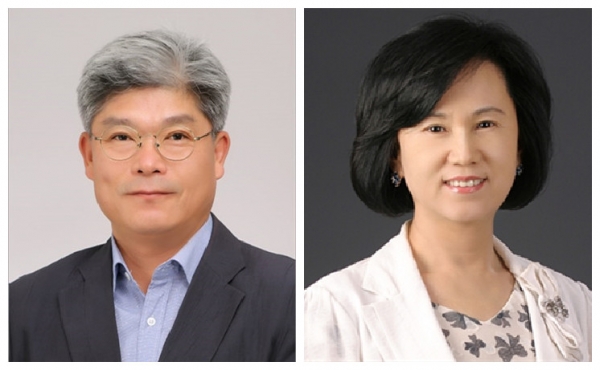
Professor Lee Sun-hee(right) explains why the doctors had a strike against the government. Photo provided by Lee Sun-hee
After the indefinite strike made by the medical community against the Ministry of Health and Welfare from the government, the strike ended on Sept. 4, when both sides reached a compromise not to proceed with the establishment of public medical school. However, nearly 90 percent of the doctors refused to take the Korea Health Personnel Licensing Examination and the government announced that they would not accept any extension on the exam and both sides are still having a conflict. The compromise has come back to the starting point and both sides have shown clear requirements. What the government and the doctors desire are at complete odds.
Kim Deok-soo, the Expert Advisor from the Presidential Commission on Policy Planning, shared his thoughts with Ewha Voice. Kim highlighted the problem of lack of doctors and an imbalance in the number of doctors depending on the region. He insisted that public medical universities could solve such problems.
According to Kim, while the average number of doctors in countries assigned in the Organization for Economic Cooperation and Development (OECD) is 3.5 per thousand people, Korea only has 2.08 doctors for the same ratio. Also, 51.4 percent of the doctors are concentrated in the capital region which is a clear unequal distribution.
“Doctors avoid working in rural areas regardless of the medical institutions. In order to improve the medical environment in rural areas, the government is aiming to make doctors work in those areas for a certain period of time and make medical treatments more public,” Kim insisted.
Kim also mentioned that enlarging the capacity of medical students has already been discussed since the previous ruling party. This has not been issued as a problem before. He added that a number of fake news are clouding the discussion with the medical community and are making important facts unclear.
“The interest rate on exclusive loans for doctors does not increase even if the number of doctors increases. Also, concerns about preferences on students who have connections with politics are not based on facts but mere suppositions,” Kim said.
In order to resolve this conflict, Kim suggested that the government, as it is a formal organization, should have a solid ground based on legislation rather than oral announcements. He added that the government should also gather different opinions and have a persuasive stance in order to come up with a compromise with the current doctors.
Regarding the same issue, Lee Sun-hee, professor from the Ewha Womans University School of Medicine, shared her thoughts. Lee suggested the government should improve the working environment for doctors rather than enlarging the number of medical students.
“The current problem in the medical community is that some mandatory fields such as thoracic surgery and general surgery have intense labor. Such amount of labor and low rewards makes these fields unpopular. Doctors should be compensated with a higher remuneration and a more pleasant working environment,” Lee suggested.
Also, the lack of infrastructure and the number of patients in the regional areas makes it hard for doctors to give treatments. Therefore, Lee suggested closing the social gap within district areas in order to enhance the medical treatment in such areas rather than enlarging medical students.
Lee shared her thoughts on establishing public medical universities as well. While the government is planning to make students who graduate from public medical universities work in vulnerable rural areas for 10 years, doctors are concerned that these students will move to cities after 10 years, which moves back to square one.
“Also, even if medical students are obligated to work in district areas, this policy can be done on current medical students rather than establishing new public medical universities,” Lee said.
Lee also expressed concern on the intervention of political forces such as civic groups on the selection of students when applying for the public medical schools. As political sources might step in, it is unclear if the selection process is fair and transparent.
Moreover, Lee believes the government should support the medical risks doctors face when diagnosing patients who may need intensive care. This would allow the doctors to cure patients more freely without the need to consider economic matters the hospitals would solely face devoid of government support.

